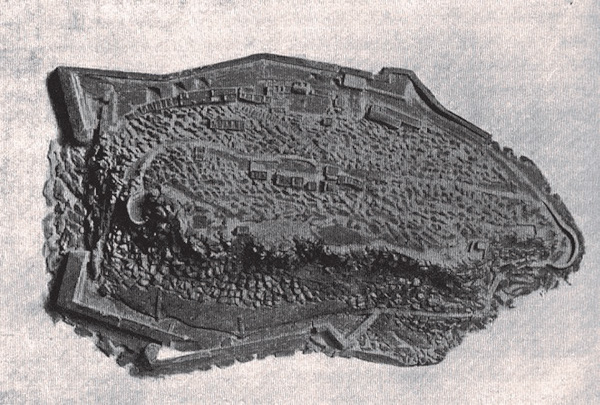A mockup of the islet of Spinalonga dating from around 1580 and currently kept in the Museo Storico Navale in Venice, where the first fortifications are displayed. Such models, like plans, are drawn up and submitted to Venice or the Cretan authorities to accurately verify the proposals for new works or repairs of the fortifications. ©Museo Storico Navale di Venezia
The fortification
The changes caused by the spread of gunpowder in the technique of war and, therefore, in the fortification architecture combined with the ever-growing Turkish threat lead the Venetians to improve their existing defence facilities in Crete and build new fortifications.
The design of the fortifications of Spinalonga is dictated by the morphology of the island's terrain and the topographical data of the wider area. The fortress is built according to the general principles of the bastion system and is formed by straight walls and bastions.
The fortification consists of two zones. The first follows the contour of the coasts, while the second is founded upon the steep rocks of the ridge. Two transverse sections of the wall connect the two fortified zones. Various fortifications are developed along and control strategic points of the bay.


